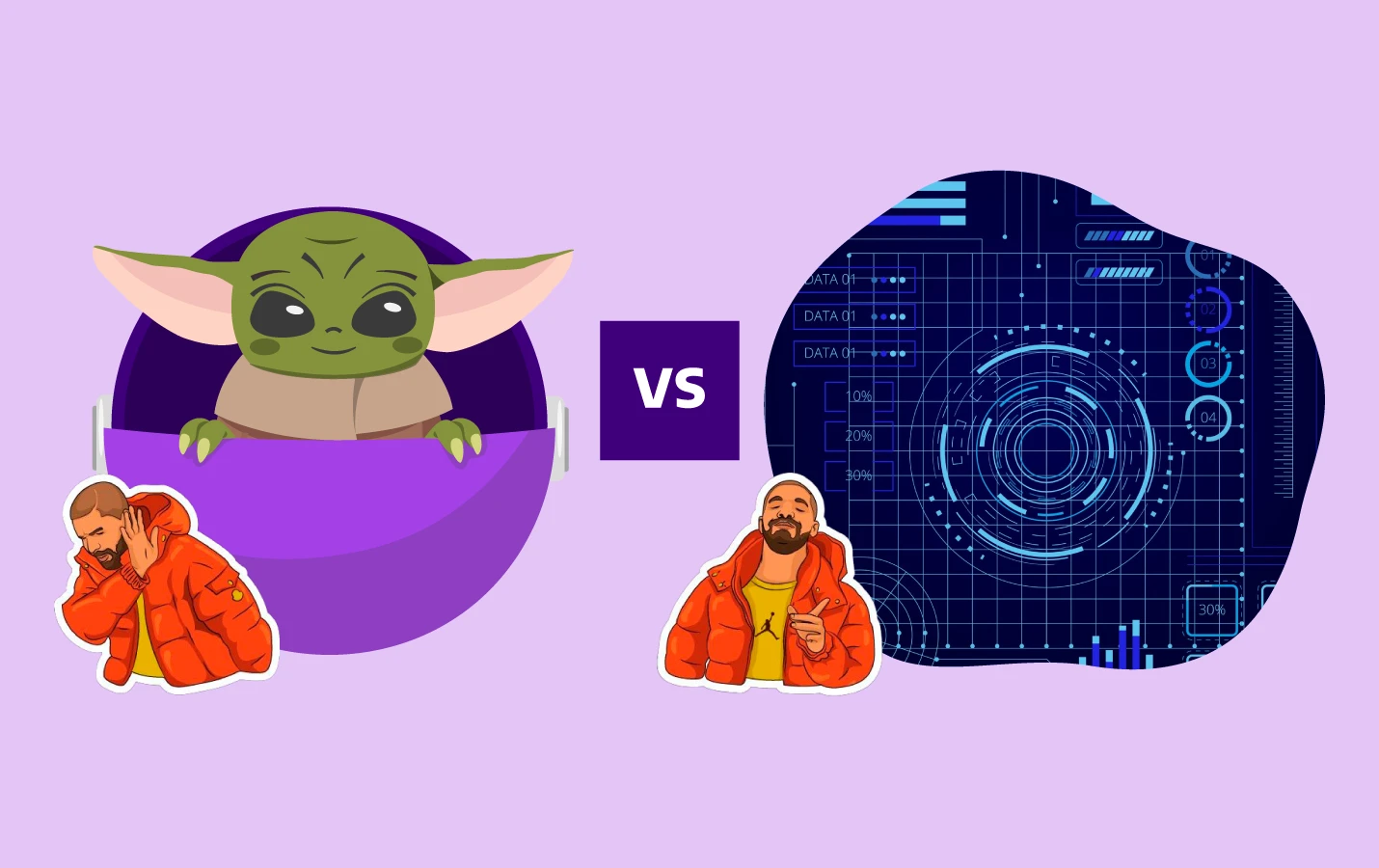The illusion of AI replacing experienced engineers
Disclaimer: This is an opinion based on our own experience. We’re in mid-2025, and the speed of technological progress may render these reflections obsolete very soon. Still, it feels worthwhile to share what we’ve been observing in practice.
In the past year, we’ve seen a recurring narrative take hold in the startup ecosystem: if juniors use AI, companies will need fewer seniors. The idea is tempting. Seniors are scarce and expensive. Juniors are easier to hire. AI seems like the perfect bridge—transforming junior developers into seniors.
What we’ve observed working on real-life projects points in a different direction. AI doesn’t eliminate the need for experienced professionals—it magnifies it. The real value doesn’t come from “upgrading juniors.” It comes from empowering seniors.
Jarvis, Not Yoda
Many people think of AI as Yoda: the wise mentor guiding you patiently from the very beginning, showing you the way to mastery. But AI doesn’t teach judgment, real-life compromises, critical thinking, context evaluation, or long-term thinking. It doesn’t make you a true professional. It doesn’t transform a Padawan into a Jedi. In fact, it’s much closer to Jarvis. It’s immensely capable, but only when guided by someone who knows how to use it and what he wants from it. In the hands of Tony Stark, the architect of the Iron Man suit, AI becomes a force multiplier, turning ideas into reality at speed and scale. However, without Tony Stark, AI doesn’t build Iron Man on its own accord.
In our experience, AI does not upgrade Juniors; it props them up, and eventually that can fall apart.
The Illusion of Solving the Talent Shortage
Let me share a first-hand experience. A senior engineer of our team used AI exactly as Tony Stark would use Jarvis: as an assistant, never as the entire solution. He leaned on it to generate boilerplate code, automate repetitive work, and test hypotheses quickly. But every output was filtered through his experience. He knew when a suggestion was too generic, when to stop, when to refine, when to double-check, and when to discard. The result was obvious—less wasted time, time spent on greater architectural focus, and better decisions made more quickly. In a nutshell, AI empowered him.
In contrast, a junior from our team treated AI as if it were Yoda. He assumed the machine “knew better” and delivered code that seemed correct. It compiled. It passed simple tests. It looked polished. But on closer inspection by an experienced engineer, it was fragile, misaligned with the business context, and difficult to maintain. The productivity that looked real at first turned into a costly refactor.
This is the illusion of solving the talent shortage. Believing that AI is a shortcut that can make juniors into seniors faster is actually a lengthy detour. AI amplifies what’s already there. It can accelerate progress or mistakes, depending on the user; however, the most dangerous part is that those mistakes can appear convincing at first glance.
Does That Mean We Shouldn’t Hire Juniors?
Absolutely not. This is where some people draw the wrong conclusion. Juniors remain essential to the growth cycle of any team. They bring energy, curiosity, and a fresh perspective. More importantly, they are tomorrow’s senior engineers—the ones who will eventually guide both humans and machines in making better decisions.
What changes in the age of AI is how we support them. Juniors still need mentors. Human mentors. AI doesn’t replace the role of a senior guiding a junior through messy architectural decisions, trade-offs, and the nuances of real-world software. AI can also short-circuit their growth. It can make them feel productive while hiding the fact that they’re skipping the deeper learning process. That’s why juniors need guardrails to use AI.
The Balancing Act Ahead of Us
The real challenge for founders and teams is not simply deciding whether to hire and place juniors or seniors on projects, but learning how to build an environment where both can thrive and be productive in the age of AI. Mastering that balancing act will define which companies turn this technology into a genuine advantage and which companies fall for its illusions.
Seniors need to be given space to use AI as the multiplying factor that it could be, not weighed down by endless firefighting of errors created elsewhere. Juniors, meanwhile, need room to grow into real critical-thinking contributors, without the false comfort of an “AI shortcut” that hides how much they still need to learn.
Striking this balance means accepting a paradox: AI makes experienced engineers even more valuable; however, monitoring the growth journey of juniors is more important, not less. If we focus only on short-term output, we risk burning both ends. If we focus on balance, we create teams where AI accelerates today’s delivery while still nurturing tomorrow’s leaders.
The companies that understand this won’t just ship faster—they’ll build stronger, more resilient teams, capable of navigating whatever the next wave of technology brings.
In our experience, the teams that accelerate the most with AI are those that amplify their senior talent while mentoring juniors responsibly. If you’d like to explore how to apply this balance in your company, let’s talk.
Send us a message
Credits
Writers: Eduardo Mora
Reviewer: Luis Vinay, Peyton Craig
Illustrator: Dai Fiorenza
Disclaimer
In this article, AI was used to check grammar and syntax.
